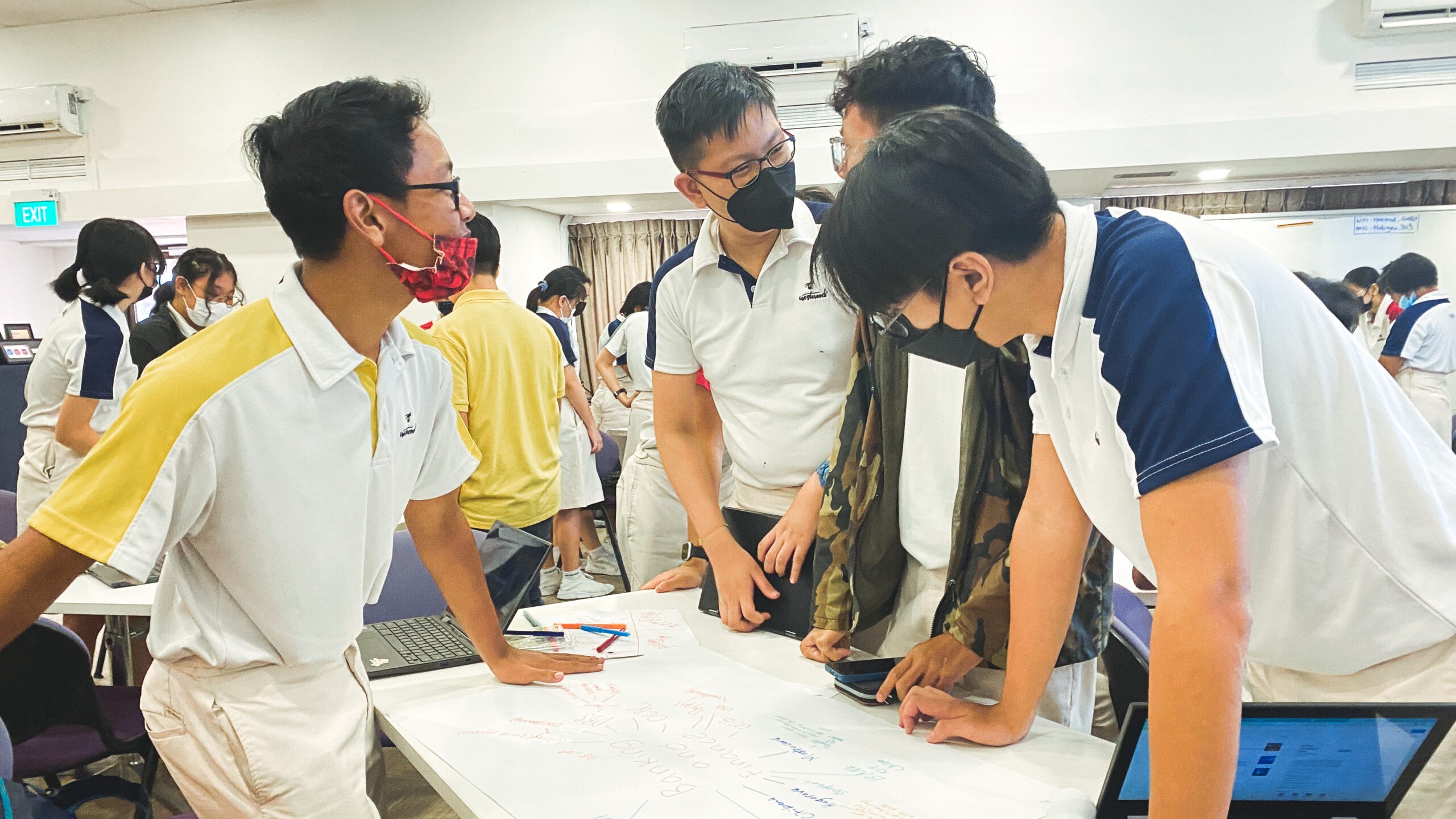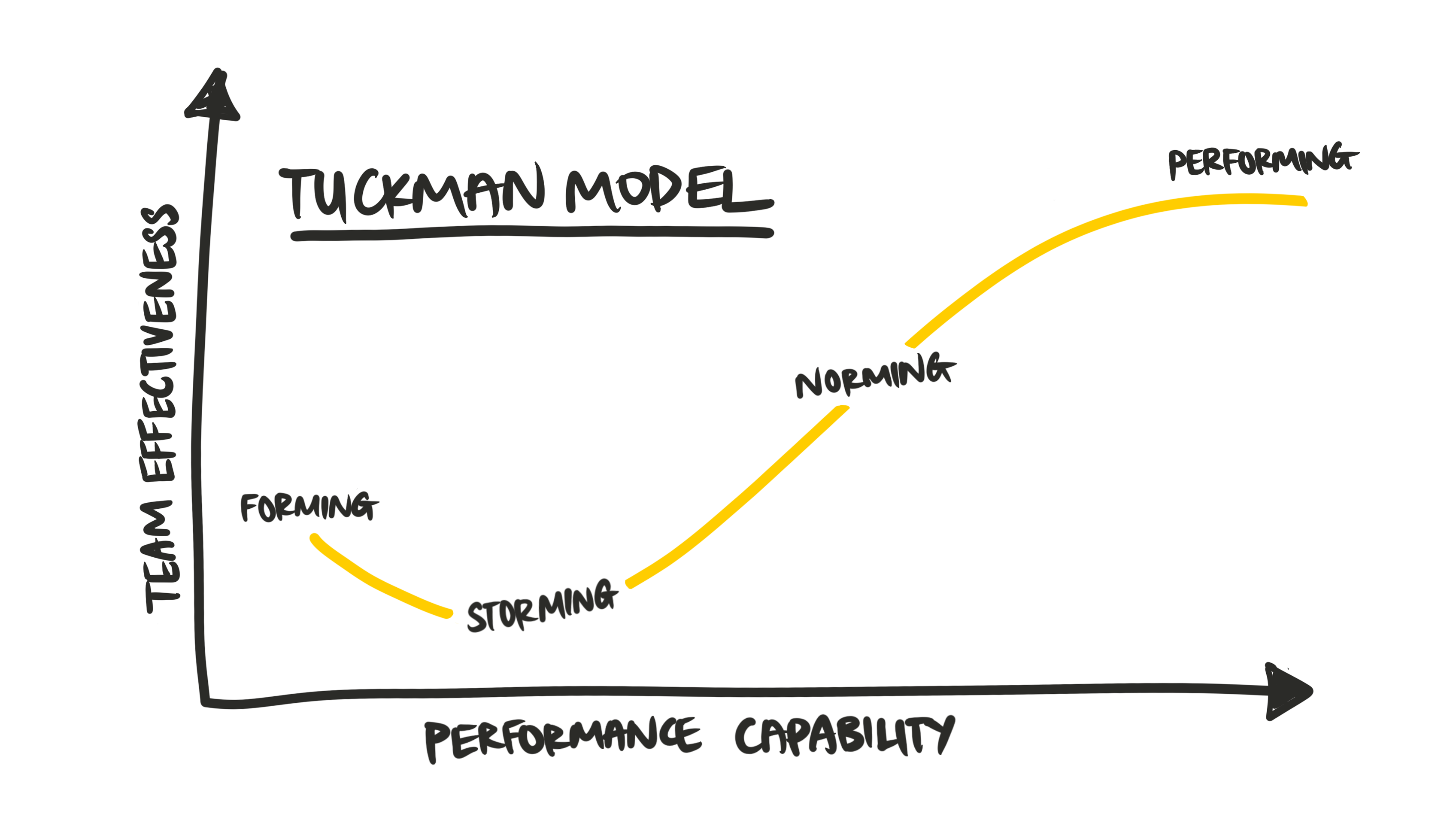My Team Is The Best Team
Contextualising Tuckman’s 4 Stages for Student Teams

School takes up a third of any young person’s day. Classrooms, Co-Curricular Activities (CCAs), and projects are the nexus of a youth’s social life. These are the platforms where they meet new people, work in teams, and at some point, deal with conflicts. These are organic opportunities for youths to develop crucial social-emotional skills and prepare themselves for a collaborative workplace. Despite that, not all social relationships and teams turn out meaningful, enriching, and positive. Some teams remain purely transactional and cordial, some teams fall into dysfunctional states, yet some teams thrive.
In 1965, psychologist Bruce Tuckman studied how a team grows from being strangers to trusted buddies and co-workers. There are 4 main stages in a team’s life cycle – Forming, Storming, Norming, and Performing. Forming is when a team has just convened and gets to know one another. Storming is when disagreements, power plays, and tensions around direction and values surface. Norming is when a team reaches mutual understanding and agrees on a set of working principles. Performing is when the team comes together almost seamlessly to drive positive results.

However, the life cycle of a team is far from linear. Some teams never got beyond forming. Some teams get stuck in an endless cycle of storming, norming, and back to storming. Indeed, great teams do not always come about naturally. Educators can help student teams to thrive by understanding team development cycles and taking tangible action to help teams progress.
Forming: The Early Days of a Team
We know when a team is in the Forming stage when student interactions are kept at a surface level. They know little about one another beyond names, classes, and hobbies. Discussions are often marked by silence and hesitance. Team members fear being out of place and disrupting the status quo.
Educators can help teams develop deeper relationships by encouraging progressive self-disclosure. Find opportunities for students to share their personal stories, strengths and weaknesses, concerns and aspirations for the team, etc. Facilitator Chad Littlefield advocated for the paradigm of “Connection Before Content”. A good icebreaker conversation is one that 1) connects people to one another, 2) connects people to the purpose of why they are here, and 3) creates the option or choice for authenticity and vulnerability. Educators can be intentional in setting aside 15 minutes at the start of every team discussion or meeting to check-in with the group and create a space for such conversations.
Storming: The Tenuous Days of a Team
The Storming phase is marked by unproductive conflicts, the formation of opposing cliques, as well as both passive and outright disagreements. The team grapples with direction and leadership and starts to form and influence opinions on what’s good for the team. Tensions arise from differing interests and perspectives.
Educators can help teams transit out of Storming by facilitating conversations and agreement. For example, after a significant conflict or tension, educators can sit the team down for a reflective conversation on what students perceive as the “plusses” (what makes this team work) and “deltas” or changes (what this team can do differently) of the team. Roger Greenaway’s Active Reviewing techniques are a great way to set these discussions up. Techniques like Spokes and Group Happy Charts can help ease the group into an objective conversation and provide structure for thinking and sharing. Through conversations like these, the team can uncover their differences and thereafter, seek alignment and clarity on team direction and dynamics.
Norming: The Restorative Days of a Team
The Norming stage is marked by a calmer and restorative tone, where members align and commit to a set of rules that helps the team succeed. This is often an iterative process as teams usually find their footing only after experimenting with different ways of working together.
Educators can help student teams navigate this process by providing mature and third-party perspectives on what constitutes helpful team behaviour. Continuous plus-delta conversations can foster a routine for teams to review their own performance and devise collective solutions to enhance team performance. This routine and familiarity of a team review structure is the crux of teaching teams to work through their own problems.
Performing: The Glorious Days of a Team
We know that a team is Performing when the team is in a state of flow and churns out high-quality work as a seamless team. The students dive straight into their work areas, stepping up to lead where appropriate, and when necessary, tapping on one another’s strengths. The work can potentially unfold with little intervention on the educators’ end. Disagreements and mistakes may still happen, but the team has now learnt to review their own performance, unpack learning points together, and tackle higher challenges as a team.
During this period, educators ought to reinforce good behaviours and commitment to the team’s norms. At the same time, educators must maintain a watchful eye for possible signs of hubris, e.g. little pockets of poor accountability or destructive behaviours. There might be a need to call out these behaviours, and help the team learn to spot and address similar behaviours in the future.
• • •
We believe that this social nexus is crucial for a young person’s social-emotional development, and intentional effort can be made to create structures and opportunities for a team to have a good chance to thrive. In the process, our youths can learn to do the same for themselves and their future teams!
This requires youths to understand the nature of leadership and team management. Educators can support this by seizing teachable moments to facilitate self and team development, and to put in place opportunities and application platforms for youths to organically interact and form meaningful social relationships in teams.
Halogen seeks to support schools and youth organisations to create these exact cultures, structures, and skill sets. If you’re keen to take an intentional approach to team development, let’s chat further at [email protected]!
